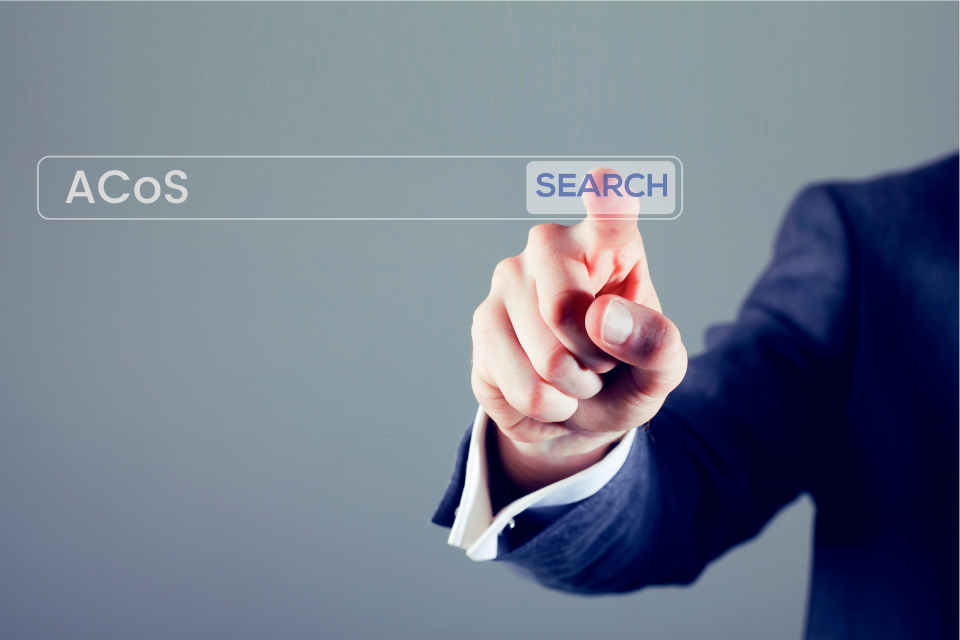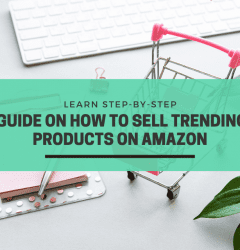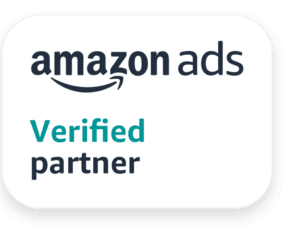This website uses cookies so that we can provide you with the best user experience possible. Cookie information is stored in your browser and performs functions such as recognising you when you return to our website and helping our team to understand which sections of the website you find most interesting and useful.
30 Sep

Understanding ACoS: Not as Simple as Keeping It Low
Advertising Cost of Sale (ACoS) is one of the most important metrics for Amazon sellers looking to measure performance of their ad campaigns on Amazon. ACoS helps determine how effective or ineffective your advertising campaigns have been, and in doing so, it positively impacts your scaling towards your business goals.
That said, interpreting and tracking ACoS tends to get slightly tricky, especially if you are just starting off in the field. To help you with this, the following guide will talk about everything you need to know about Amazon ACoS!
What is Amazon ACoS and its components? How do we calculate it?
Simply put, ACoS measures the efficiency of different advertising campaigns. Mathematically, it can be denoted as the ratio of the ad spend to the ad revenue in percentage. Here is how you can calculate your Amazon ACoS:
ACoS = Ad Spends / Ad Revenue x 100
In essence, the components of ACoS are Cost per Click (CPC), Average Order Value (AOV) and Conversion
Ad Spends = CPC x Clicks
Ad Revenue = AOV x Units
Therefore, ACoS = (CPC x Clicks) / (AOV x Units) x 100
We could also say
ACoS = CPC / (AOV x Conversion) x 100
If your ACoS values are high or low, it would be wise to look into its components and make decisions accordingly. The following matrix indicates the status of each component as it relates to high or low ACoS;
ACoS | CPC | AOV | Conversion |
High ACoS | High | Low | Low |
Low ACoS | Low | High | High |
As per the above matrix, if your ACoS is high, you could look into lowering your CPC or increasing your AOV or conversion levels based upon your business goals.
Relationship between ACoS, TACoS and ROAS
While ACoS is a crucial Amazon seller metric, it doesn’t consider how ad spend is affecting brand awareness and the organic sales that result from brand growth. TACoS – or Total Advertising Cost of Sale – on the other hand, measures advertising spend as a fraction of total revenue generated. In doing so, TACoS provides a much clearer picture of the performance of various ad spends.
Since advertising is not just about selling a product but also about boosting brand recognition and growing the overall business, TACoS provides marketers with the right insights into how the various actions are influencing your overall business goals.
Return on Ad Spend (ROAS) is a metric used for measuring the effectiveness of an advertising campaign. It helps retailers evaluate which methods are working, which aren’t working, and what can be done to improve future advertising efforts. In essence, RoAS is the inverse of ACoS.
As a rule of thumb, it’s advised to aim for high RoAS. This is a good strategy for selling products that are generally low-converting and don’t require high visibility. Low RoAS, on the other hand, works when you are trying to sell a low-selling stock and want to increase visibility. Basically, you’re committing a large amount of ad spend to get that higher visibility and a higher return on investment.
What makes Amazon ACoS an important metric?
Tracking progress is one of the most essential activities for growth-focused eCommerce businesses. With proper metrics to measure progress, companies will know precisely how their ad spend is being used and what they need to change in their strategy. ACoS helps by tracking your costs to figure out how much profit you are likely to make based on your ads efforts. The Amazon ACoS figure is also helpful in figuring out your break-even point as well.
What does a good Amazon ACoS look like?
Since ACoS talks about the efficiency of your ad campaigns, it is a figure that is based on many variables and factors such as products, domain, marketplace, competition, and more. In that regard, ACoS is slightly different from other metrics for measuring Amazon seller success. While you might be striving for increasing the value of some metrics while decreasing the value of others, a good value of ACoS depends entirely on your strategy, and there is nothing set-in-stone.
Some Amazon sellers look for Amazon advertising to maximize their profits, while some turn to Amazon for increasing their sales. Both of these are different endpoints, so a “good” ACoS figure in both these situations will be different, too. What your business goals are will affect what a good ACoS value for your business is.
Generally, to make profits, you would want to increase the product price and decrease ad spending. This is often considered the best way to obtain revenue for your eCommerce business. However, finding a balance is very important. You don’t want to refrain from spending on advertising and missing out on exposure, nor do you want to spend too much and burn your profits. Moderation is the key!
What do low ACoS and high ACoS mean?
A low value of Amazon ACoS correlates to high profitability. The following factors directly impact the ACoS figure:
- Ad campaign structure
- Business goals
- Lifecycle of the product
- Profit margins, and so on.
Generally, it is advised to aim for a low ACoS figure to ensure your business is making profits, but that entirely depends upon your advertising strategy in place and the outcomes you expect out of it.
Now that we’ve talked about low and high ACoS and looked at what they mean in a business context, let’s talk about what ‘good’ and ‘bad’ ACoS are, along with when you should aim for high ACoS and when to try lowering your ACoS.
What is Good and Bad ACoS?
Knowing what good ACoS is is important for your business to not face any losses due to your marketing strategy. However, you should remember that there is nothing like an objectively ‘good’ or ‘bad’ ACoS. This value varies highly from product to product since every product has different profit margins. And, the profit margin is an important component that goes into deciding whether you are making profits or losses. As long as your total ad spend is less than your profit margins, your business will be gaining net profits.
For instance, suppose you have a product on Amazon for sale, with a price tag of $40. After deducting other variables like packing costs, shipping costs, Amazon fee etc., you are hoping to earn $10. So, your break-even ACoS would be 25% ($10/$40). Therefore, as long as you don’t spend more than 25%, your business will not incur losses.
Let’s understand this more comprehensively by looking at situations where high ACoS is acceptable, along with what needs to be done to lower the Amazon ACoS value.
Scenarios where it is acceptable to have high ACoS
Since ACoS is all about measuring the efficiency of your advertising campaigns, there are a few important scenarios where not only is it acceptable, but it is also advisable to aim for a high value of ACoS. Some such scenarios include:
1. Launch of a New Product: Launching any product is crucial for your eCommerce business. At that stage, you are responsible for informing your audiences of everything that they need to know or learn about the product—a time-taking process. And because of this, you are likely to see lower conversions every time you launch a new product. So, your ACoS will be high, to begin with, because you want to increase the visibility of your product first. With proper ad strategy, and as customers gain more confidence, you will start noticing increasing conversion rates and decreasing ACoS.
2. Launch of a Brand or Brand Awareness: if you are launching your eCommerce brand, rebranding it, or raising awareness in the market, you will have to spend some money initially to get the advertising strategies up and running. During this phase, you will generally witness lower conversions, resulting in a higher ACoS value. However, as your ads get streamlined and people get aware of your brand, and products, you will score more visibility, sales, and reviews, and eventually, it will help in reducing advertising costs.
3. Clear Out Old or Excess Inventory: Another situation where you will be seeing high ACoS figures is when you want to clear out your old products and introduce new ones. Losing some funds in advertising is possible at this stage, which will lead to high ACoS for a brief while, but it will slowly get settled with everything in place.
If you are wondering what proactive measures can be taken to reduce the ACoS value, other than waiting for it to organically come down, keep reading –
What can be done to lower the ACoS value?
Here is a list of tips you can use to bring down your ACoS value and experience profits:
1. Focus on the right keywords
If you wish to reach leads that will convert and buy your products, you must work with your keyword strategy to focus on the correct set of keywords for your product listings. Choosing the right keywords is the first step to attracting the right set of people who might be interested in your product. That way, you will be able to cut down on your advertising costs since your keywords will be relevant.
So, how to find the right keywords?
The first and foremost essential thing to do is keyword research. If you choose the right set of keywords, your products will attract more leads, which will result in higher conversions, and lower ACoS value! Once you have a list of keywords with you, you need to organically include them in your product listings.
2. Optimize page content
When your leads come to your page, they should be greeted with all the essential information to know before making any purchases. This information should also be in tandem with the keywords you selected in the previous step. Using your product information, Amazon decides the relevancy of products. So, if your information is irrelevant, you will experience lower conversions.
To stop this from happening and get more conversions, whenever you post sponsored posts on Amazon, keep the product information relevant and on-point. Show just what your visitor needs to make the purchase, and you’ll automatically see more people converting.
3. Optimize your titles
Your title is, more often than not, what brings the highest number of visitors to your product pages. If you wish to attract relevant leads, your title should be as optimized as possible. This could be done by including relevant keywords in the titles, keeping them crisp, and conveying just the right information. With every relevant title, you bring more people towards your posts through the sponsored content. This is a sure-shot way of capturing more relevant leads for your business.
4. Set the right bid amount
Setting the wrong bid amount is the biggest mistake eCommerce owners make. You must choose the right bid amount for your advertisements to ensure lowering of your ACoS, and that can be done by thorough introspection of the company’s goals, targets, and strategies! If you want to get the best results for your ACoS, your bid should neither be too high nor too low.
Conclusion
ACoS is a tricky metric – it gives a lot of useful insights, but for that, it takes a lot of precision and patience, too. Your goal should be to find the right balance for your ad spend that will keep your ACoS in check, too.
Related Post
Industries Served
United States
India













